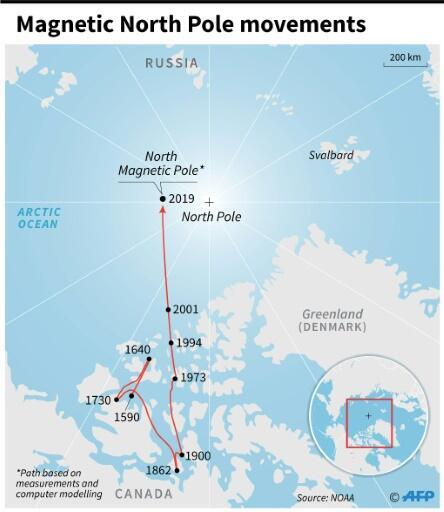Climate change has knocked Earth off its axis, study shows
Glacial melting from climate change has shifted the Earth’s axis of rotation over the past few decades, according to new research that underscores the impact of human activity on the planet.
Issued on:

The poles, where the Earth’s axis of rotation intersect with its surface, are not fixed geographical points but instead wander around amid changes in the Earth's magnetic field.
Scientists using satellite data to track “polar drift” found the direction of the north and south poles had shifted eastwards at an accelerated rate since the mid-1990s.
As well as changing direction, the speed of drift between the years 1995 and 2020 was at least 17 times faster than between 1981 and 1995.
Ice loss 'main driver'
Published in the American Geophysical Union journal, the Chinese-funded study used data from the Gravity Recovery and Climate Experiment satellites, which detect changes in the Earth's gravity field.
It found that loss of water caused by melting glaciers was the main driver of the “rapid polar drift”, but that groundwater depletion and ocean currents also played a role.
"This new finding indicates that a close relationship existed between polar motion and climate change in the past,” the study said.
-
Tide turning as indigenous groups help steer global effort to save oceans
-
Warming has left Gulf Stream at 'weakest point in a millennium'
Scientists estimate the poles have moved by 4 metres since 1980. Monitoring their position is becoming a valuable tool for tracking climate change.
Last week an international climate summit rallied ambitions to reduce global warming, with the US – a major polluter – promising to halve emissions by 2030.
Scientists say heavily polluting countries must be carbon neutral by the middle of the century in order to meet the Paris Agreement goal of limiting warming to "well below" two degrees Celsius.

Daily newsletterReceive essential international news every morning
Subscribe